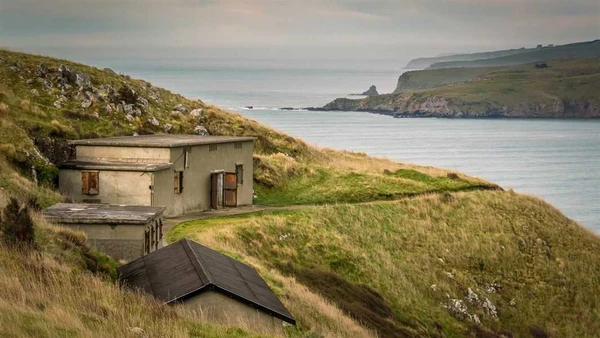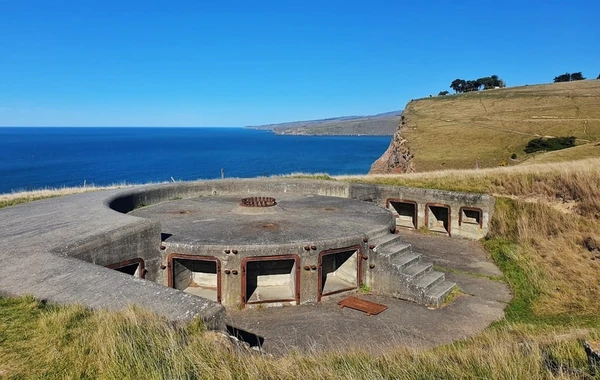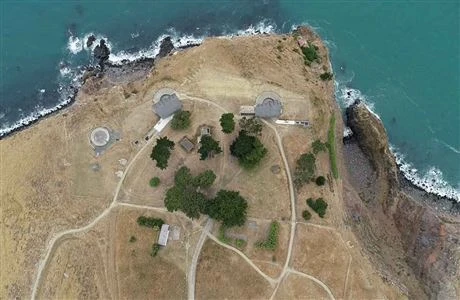Godley Head
The Godley Head WWII coastal defence battery sits atop sheer 120 metre-high cliffs. Built in 1939, it is ranked in the top ten New Zealand coastal defence heritage sites.
- There are toilets and parking at Godley Head and Taylors Mistake.
- There are steep, unfenced cliffs - keep children under close supervision at all times.
- Dogs are allowed on a lead, but they can’t go onto Taylors Mistake beach in summer months.
- Livestock graze in this area. Give livestock space and shut gates behind you.
- The area is very exposed. Take appropriate clothing for all weathers.
Awaroa/Godley Head is a fantastic place to be for scenery alone. This exposed headland on top of sheer 120 metre-high cliffs can, on a clear day, provide views across the harbour to Banks Peninsula and far down the coastline.
The vegetation is largely modified grasslands.
White-flippered penguin/korora are being returned to a small bay just beyond the baches at Boulder Bay.
The easy graded tracks, great views and fascinating history makes the Godley Head area suitable for small children and family groups.
World War 2
From September 1939 to September 1945, Godley Head was the scene of a military defence operation, one of 44 New Zealand coastal defence batteries established during World War 2. Godley Head’s “counter bombardment battery”, as it was titled, was primarily to protect facilities of the Port of Lyttelton from enemy warship attack and to provide a safe haven for shipping.
Once the Japanese entered the war, the battery was also to assist in the defence of Brighton Beach from the Spit to the Waimakariri River mouth against potential enemy landings. During the peak year of 1942, over 400 personnel manned the battery, while total numbers to run the entire operation exceeded 1,000. Members of the NZ Army and Navy were based here, including 150 women of the Women’s Auxiliary Army Corps (WAAC’s). It was a 24/7 operation.
Not one round was fired, by any gun on Godley Head, at a true enemy of the nation. Yet the guns and their crews were an insurance policy against raiding and assault that the Government of the day determined was an essential investment.
“On the stormy night of 24 June 1941, the small German raider Adjutant arrived on the Head at 9.30 pm. In 5-metre waves and a 60 km wind, guided by the brightly burning Godley Lighthouse and carefully avoiding the Battery’s searchlights, the crew laid 10 mines. These 540 kg, magnetically activated mines were laid in a zig-zag pattern across the approaches to Lyttelton Harbour. The first ship into Lyttelton the next morning was the inter-island ferry from Wellington. The mines did not explode, nor have they ever been found. The Battery’s presence was most likely a significant factor in the hurried execution and nervousness with which the Germans laid the mines, and the resulting failure. In that one night, the Battery unknowingly justified its entire existence.” From The Godley Head Counter Bombardment Battery, A Short History by Peter C Wilkins.
Awaroa/Godley Head lighthouse
The lighthouse was relocated to a rocky promontory down the cliff and served shipping for many decades. It suffered considerable damage in the Christchurch earthquake of 2011 when large areas of cliff face slumped into the sea. The light is no longer operational, nor accessible. The glass lamp was salvaged.



